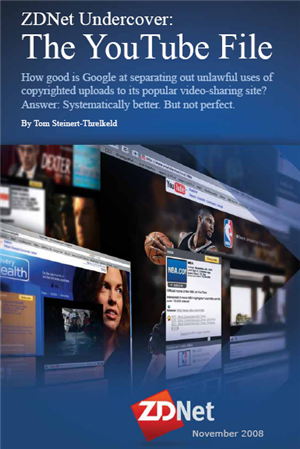Time for Change at YouTube: Monetization "No. 1 Priority in 2009"

YouTube celebrates its third birthday next Monday.
Its launch, on Dec. 15, 2005, did not attract any attention. The bigger news of the day: Mitt Romney would not seek a second term as governor of Massachusetts. He expected to be elected president by now. Some guy named Obama, like YouTube, was not even on the news radar.
Now, the president-elect uses YouTube, which wasn't even available when his predecessor was re-inaugurated at the start of 2005, is doing weekly addresses on the video-sharing site.
The government of change finds it easier to broadcast itself to viewers of all types, than to ask for or pay for time on radio or TV. Now, YouTube, though, is promising to change some of that.
It wants to get paid, for what it does.
"The monetization is coming," says Jordan Hoffner, head of news and content partnerships for YouTube.
The eyeballs are already there. Hundreds of millions of videos are watched every day on YouTube, he says. Thirteen new hours of videos get uploaded every minute. It's the third-largest search engine, behind Google and Yahoo (although that could change a bit if Steve Ballmer kickstarts talks between Microsoft and Yahoo, after all.)
How is YouTube going to get there?
By being a home of "premium" entertainment, not just cats on skateboards captured by everyday users, Hoffner says.
If you haven't noticed, YouTube is now starting to run full-length features, not just three-minute clips of cats in misdirected action. (But it is hard to find the first one from MGM, the initial major studio testing out YouTube as a platform for some of its less prominent titles).
Download: 
It's got CBS running its own channel. It's encouraging NBC and other programmers to "monetize" user uploads, by putting ads next to clips that go online that contain their content.
And it's trying to create a "click to buy" service that takes advantage of the ordering mechanisms in iTunes and Amazon. This kicked up Monty Python DVD sales to the Top 5 on Amazon, after one week, Hoffner said last week in New York.
But it can be hard to find the click-to-buy link or ad spot, so there clearly is still plenty of room for "monetization" left to go at YouTube.
"It's the number one priority in 2009,'' he contends.
After all, YouTube, by his measure, is "the world's largest video on demand" platform.
Which means, long term, YouTube will be going up against cable system operators, satellite TV operators and such folks as even NetFlix and Amazon in providing a "clean well-lit" environment for premium entertainment.
That is one reason why YouTube has banned 'suggestive' clips from its site.
But the bigger challenges remain: Getting premium suppliers of video to enter its house. This will mean providing top-notch suppliers some kind of compelling logic why they should want their full-length films and shows to be the final destination on YouTube, after folks are finished watching cats on their skateboards. And convincing viewers to regard YouTube as a better source of great content than, say, NBC and News Corp.'s Hulu.com or Comcast's Fancast.com .
It's going to take time. Let's check back on birthday six.